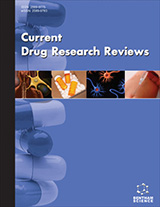[1]
Chidambaram, M.; Krishnasamy, K. Drug-drug/drug-excipient compatibility studies on curcumin using non-thermal methods. Adv. Pharm. Bull., 2014, 4(3), 309-312.
[2]
Balestrieri, F.; Magrì, A.D.; Magrì, A.L.; Marini, D.; Sacchini, A. Application of differential scanning colorimetry to the study of drug-excipient compatibility. Thermochim. Acta, 1996, 285(2), 337-345.
[3]
Rozet, E.; Ceccato, A.; Hubert, C.; Ziemons, E.; Oprean, R.
Rudaz, S.; Boulanger, B.; Hubert, P. Analysis of recent pharmaceutical regulatory documents on analytical method validation. J. Chromatogr. A, 2007, 1158, 111-125.
[4]
Alsante, K.M.; Ando, A.; Brown, R.; Ensing, J.; Hatajik, T.D.; Kong, W.; Tsuda, Y. The role of degradant profiling in active pharmaceutical ingredients and drug products. Adv. Drug Deliver. Rev., 2007, 59, 29-37.
[5]
Bakshi, M.; Singh, S. Development of validated stability-indicating assay methods -critical review. J. Pharm. Biomed. Anal., 2002, 28, 1011-1040.
[6]
Gutierrez, M.A.; Stimmel, G.L.; Aiso, J.Y. Venlafaxine: a 2003 update. Clin. Ther., 2003, 25, 2138-2154.
[7]
Rudaz, S.; Stella, C.; Balant-Gorgia, A.E.; Fanali, S.; Veuthey, J.L. Simultaneous stereoselective analysis of venlafaxine and O-desmethylvenlafaxine enantiomers in clinical samples by capillary electrophoresis using charged cyclodextrins. J. Pharm. Biomed. Anal., 2000, 23, 107-115.
[8]
Rudaz, S.; Veuthey, J.L.; Desiderio, C.; Fanali, S. Enantioseparation of venlafaxine and O-desmethylvenlafaxine by capillary electrophoresis with mixed cyclodextrins. Chromatographia, 1999, 50, 369-372.
[9]
Vu, R.L.; Helmeste, D.; Albers, L.; Reist, C. Rapid determination of venlafaxine and O-desmethylvenlafaxine in human plasma by high-performance liquid chromatography with fluorimetric detection. J. Chromatogr. B, 1997, 703, 195-201.
[10]
Bhatt, J.; Jangid, A.; Venkatesh, G.; Subbaiah, G.; Singh, S. Liquid chromatography-tandem mass spectrometry (LC-MS-MS) method for simultaneous determination of venlafaxine and its active metabolite O-desmethylvenlafaxine in human plasma. J. Chromatogr. B, 2005, 829, 75-81.
[11]
Liu, W.; Cai, H.; Li, H. High performance liquid chromatography - electrospray ionization mass spectrometry (HPLC-MS/ESI) method for simultaneous determination of venlafaxine and its three metabolites in human plasma. J. Chromatogr. B, 2007, 850, 405-411.
[12]
Patel, B.N.; Sharma, N.; Sanyal, M.; Shrivastav, P.S. Liquid chromatography tandem mass spectrometry assay for the simultaneous determination of venlafaxine and O-desmethylvenlafaxine in human plasma and its application to a bioequivalence study. J. Pharm. Biomed. Anal., 2008, 47, 603-611.
[13]
Makhija, S.N.; Vavia, P.R. Stability indicating LC method for the estimation of venlafaxine in pharmaceutical formulations. J. Pharm. Biomed. Anal., 2002, 28, 1055-1059.
[14]
Rao, R.N.; Raju, A.N. Simultaneous separation and determination of process-related substances and degradation products of venlafaxine by reversed-phase HPLC. J. Sep. Sci., 2006, 29, 2733-2744.
[15]
Chhalotiya, U.K.; Patel, H.B.; Bhatt, K.K. Development and validation of an ultra-performance liquid chromatography method for venlafaxine hydrochloride in bulk and capsule dosage form. Indian J. Pharm. Sci., 2010, 72(6), 814-818.
[16]
Baldania, S.L.; Bhatt, K.K.; Mehta, R.S.; Shah, D.A.; Gandhi, T.R. RP-HPLC estimation of venlafaxine hydrochloride in tablet dosage forms. Indian J. Pharm. Sci., 2008, 70(1), 124-128.
[17]
Asafu-Adjaye, E.B.; Faustino, P.J.; Tawakkul, M.A.; Anderson, L.W.; Lawrence, X.Y.; Kwon, H.; Volpe, D.A. Validation and application of a stability-indicating HPLC method for the in vitro determination of gastric and intestinal stability of venlafaxine. J. Pharm. Biomed. Anal., 2007, 43(5), 1854-1859.
[19]
Singhvi, G.; Gampa, G.; Saha, R.N. Development and validation of a stability indicating liquid chromatographic method for the determination of milnacipran in bulk and its formulations. Curr. Pharm. Anal., 2013, 9(2), 191-198.
[20]
Singhvi, G.; Kumar, V.; Ukawala, R.; Saha, R.N. Development of bioanalytical hplc method for estimation of milnacipran hydrochloride in rabbit plasma using solid phase extraction technique and its application in pharmacokinetic investigation. Curr. Pharm. Anal., 2017, 6, 574-580.
[21]
Bolton, S. Pharmaceutical statistics: practical and clinical applications.
3rd ed. New York: Marcel Dekker, 199.
[22]
Verma, R.K.; Garg, S. Compatibility studies between isosorbide mononitrate and selected excipients used in the development of extended release formulations. J. Pharm. Biomed. Anal., 2004, 35, 449-458.
[23]
McDaid, F.M.; Barker, S.A.; Fitzpatrick, S.; Petts, C.R.; Craig, D.Q.M. Further investigations into the use of high sensitivity differential scanning calorimetry as a means of predicting drug-excipient interactions. Int. J. Pharm., 2003, 252, 235-240.
[24]
Balestrieri, F.; Magri, A.D.; Magri, A.L.; Marini, D.; Sacchini, A. Application of differential scanning calorimetry to the study of drug-excipient compatibility. Thermochim. Acta, 1996, 285, 337-345.
[25]
Schmitt, E.A.; Peck, K.; Sun, Y.; Geoffroy, J.M. Rapid, practical and predictive excipient compatibility screening using isothermal microcalorimetry. Thermochim. Acta, 2001, 380, 175-183.
[26]
Pani, N.R.; Nath, L.K.; Acharya, S.; Bhuniya, B. Application of DSC, IST, and FTIR study in the compatibility testing of nateglinide with different pharmaceutical excipients. J. Therm. Anal. Calorim., 2012, 108, 219-226.
[27]
Pharmaceutical development report - example QbD for IR generic drugs; The United States Food and Drug Administration: Maryland, USA, 2012, pp. 25-28.




























